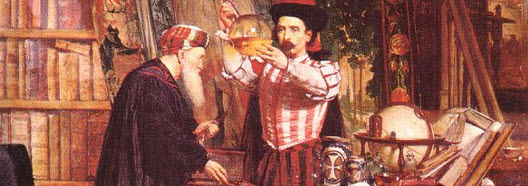Histology: Tissue Identification
Tissues are collections of cells that perform a similar function. This is the next level of organization in the human body up from cells themselves, and a good starting point before actually venturing into the different body systems. The tissues identified in this chapter can actually be referenced multiple times throughout the rest of the course, and provide a great foundation in learning the microphysiology of each organ in the body.
Histology, Tissue Identification Lecture Powerpoint
 |
Purpose: This Powerpoint lecture covers the most common types of tissues found in the human body, including epithelium, muscle, nervous, and connective. The basic shape and pattern of the cells that make up each tissue are shown and their typical functions are explained. Example slides from different organs in the body are used to provide a context.
Essential Concepts: Cells, tissues, histology, epithelium, simple squamous, stratified squamous, simple cuboidal, simple columnar, pseudostratified ciliated columnar, skeletal muscle, smooth muscle, cardiac muscle, nervous, connective, loose areolar, fibrocartilage, dense fibrous, blood, reticular, adipose.
Histology, Tissue Identification Student Notes Outline
Purpose: Taking efficient notes can be a big challenge for many students, especially when working from a Powerpoint lecture. This outline gives students a means to take notes that guides them toward important concepts and avoids the pitfalls of writing word-for-word or simply not taking notes at all. The outline lays out each of the key concepts, ideas, and blank diagrams that students are expected to learn. They fill in the missing details as the lecture proceeds.
Essential Concepts: Cells, tissues, histology, epithelium, simple squamous, stratified squamous, simple cuboidal, simple columnar, pseudostratified ciliated columnar, skeletal muscle, smooth muscle, cardiac muscle, nervous, connective, loose areolar, fibrocartilage, dense fibrous, blood, reticular, adipose.
Tissue Identification Lab
Purpose: The best way for students to begin learning and identifying the different types of tissues is to actually practice finding them under the microscope. This lab provides an outline of a microscope slide for students to sketch what they see as they examine each type of tissue.
Essential Concepts: Cells, tissues, histology, epithelium, simple squamous, stratified squamous, simple cuboidal, simple columnar, pseudostratified ciliated columnar, skeletal muscle, smooth muscle, cardiac muscle, nervous, connective, loose areolar, fibrocartilage, dense fibrous, blood, reticular, adipose.
Histology Practice Practical Exam
 |
Purpose: The practical exam for the end of this unit is a difficult one for students, as they must examine and identify an unknown histology slide in a limited amount of time. This Powerpoint provides a series of practice slides for students to identify, along with an answer key at the end.
Essential Concepts: Cells, tissues, histology, epithelium, simple squamous, stratified squamous, simple cuboidal, simple columnar, pseudostratified ciliated columnar, skeletal muscle, smooth muscle, cardiac muscle, nervous, connective, loose areolar, fibrocartilage, dense fibrous, blood, reticular, adipose.
Histology and Tissue Identification Study Guide
Purpose: This study guide is a condensed listing of the major vocabulary words from this chapter, along with a set of practice questions and diagrams similar to what might be on a written test. The questions and vocabulary are roughly written in the same order as they appear in the lecture.
Essential Concepts: Cells, tissues, histology, epithelium, simple squamous, stratified squamous, simple cuboidal, simple columnar, pseudostratified ciliated columnar, skeletal muscle, smooth muscle, cardiac muscle, nervous, connective, loose areolar, fibrocartilage, dense fibrous, blood, reticular, adipose.
